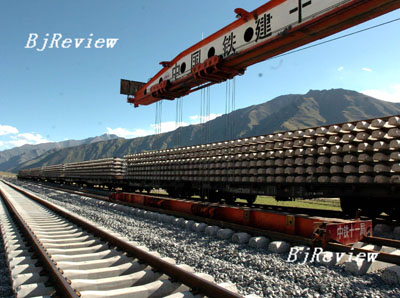
The Ministry of Railways (MOR) and the State Development and Reform Commission (NDRC) are formulating measures to increase the capital flow toward railway construction. According to Zhang Jianping, Deputy Director of the MOP Development and Planning Department, related measures may be released in the first half of this year.
Through these measures, the MOR hopes to push forward reforms concerning the financing and investment in railway construction. While talk of these reforms surfaced more than two years ago, little progress has been made so far.
According to Zhang, priority will be given to the development of joint venture railways, enlarging the scope of private capital flowing into their construction and seeking out new investors this year.
Since the 1990s, China has adopted a series of measures encouraging diversified capital investment in railway construction, as well as the development of joint venture railways. Yet up to now most railways were still constructed and owned by the government. Even in existing joint venture railways, the government holds more than 95 percent of the shares. Figures from the MOR show that in 2006, only 2.77 billion yuan in foreign capital went to railway construction--peanuts compared with the total railway infrastructure investment of 160 billion yuan.
The translucent hand of progress
An official from the MOR says that while continuing to attract diversified capital from local governments and from domestic and international private sectors, the ministry will actively introduce strategic investors and greatly increase the proportion of direct financing going to the railway sector.
According to the official, the MOR is also researching ways to establish railway industrial investment funds, exploring more effective ways to incorporate investments of insurance and social security funds, promoting shareholder reform, and creating several joint stock companies that will list on domestic or foreign stock exchanges.
"Diversifying railway investors can attract more private and overseas capital, thus helping improve the overall operational effectiveness of railways," said Xiang Chun, associate researcher at the Economic and Planning Research Institute of the MOR.
According to Xiang, in regards to the construction plans for joint venture railways, the MOR will consider franchising, entrusting management, building-transfer (BT), building-operation-transfer (BOT), public-private partnership (PPP) and so on.
The MOR will encourage private and foreign investments in the restructuring of state-owned railway enterprises and develop an economy of mixed ownership. Quality assets in large and profitable state-owned railway enterprises will be restructured to attract investment from non-public sectors in order to establish joint-stock companies of mixed ownership. The ministry also encourages non-public enterprises to participate in the restructuring of railway auxiliary industries through mergers, acquisitions, stock holdings and equity participation. The government will provide assistance for investment recovery and financing channels and offer favorable tax policies and transport pricing mechanisms, in an effort to protect the legitimate rights and interests of investors.
In Xiang's opinion, these measures will help put potential railway industry investors at ease.
China's railway sector has been open since 1998. With the principles of equal access and fair treatment, the Chinese Government allows private and foreign capital to invest in railway construction, transporting services, transportation equipment manufacturing and diversified business operations, including trunk railways and feeder railways.
However, few private and foreign investors have jumped in the game. Among the 2.77 billion yuan of foreign investment in 2006 going to railways, most came from loans the MOR borrowed from the World Bank and Asian Development Bank. Last year, though 23.5 billion yuan was invested in railways, most was contributed by local governments.
| 